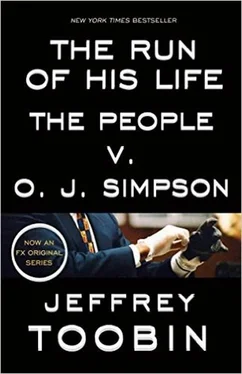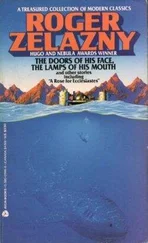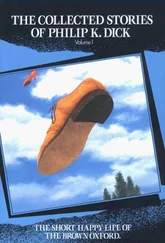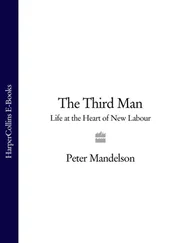In the last half hour before 10:00, more than a hundred people jammed the hallway outside of Ito’s courtroom. Bookers for talk shows had taken up more or less permanent residence in that hallway for weeks, and on this day, several stars of the shows joined in the vigil. NBC had forty camera crews ready to roll for reaction to the verdict. ABC had assigned four producers to each juror.
At 9:49 Darden walked into the courtroom alone. Three minutes later, Clark arrived with a retinue of four police bodyguards. At 9:55 Johnnie Cochran, Simpson’s sisters, and their Nation of Islam escorts completed the cast in the courtroom.
At one minute before 10:00, the deputies escorted Simpson from his lockup, and he nodded to his family just as he had every day.
For perhaps the first time in the entire trial, Ito appeared and started the proceedings precisely on schedule.
“Counsel,” Ito said to the lawyers, “is there anything else we need to take up before we invite the jurors to join us?”
For once, the answer was no.
The jurors filed out in their usual order, expressionless as always. They looked ahead vacantly. None of them met Simpson’s eye.
Ito directed Deirdre Robertson to hand the envelope containing the verdict forms to one of the sheriff’s deputies, who walked it over to Armanda Cooley. “Madam Foreperson,” Ito said, “would you please open the envelope and check the condition of the verdict forms?”
Cooley did so.
“Are they the same forms you signed, and are they in order?”
“Yes, they are.”
Ito cautioned the audience that “if there is any disruption during the reading of the verdicts, the bailiffs will have the obligation to remove any persons disrupting these proceedings.”
Ito paused. “Mr. Simpson,” he instructed, “would you please stand and face the jury.” Unbidden, Cochran and the rest of the defense team rose with him. “Mrs. Robertson,” Ito cued.
The judge’s clerk stumbled as she read the title of the case, then steadied herself as she came to the verdict.
“We the jury in the above-entitled action find the defendant, Orenthal James Simpson, not guilty of the crime of murder in violation of Penal Code Section 187A, a felony, upon Nicole Brown Simpson, a human being, as charged in count one of the information.”
At the words “not guilty,” Simpson exhaled and gave a sort of half smile. He looked like he was going to cry but didn’t. Cochran stood behind him as they faced the jury, and on hearing “not guilty” Cochran pumped his fist quickly, then grabbed Simpson by the shoulder and, in a startlingly intimate gesture, placed his cheek on the back of O.J.’s shoulder. Robert Shapiro looked stricken, crushed. His alienation from his colleagues and client was never more visible than at that moment.
Robertson then proceeded to read the second verdict, that in the murder of Ronald Lyle Goldman. At the second utterance of the words “not guilty,” Kim Goldman let out a trembling howl. She grabbed her hair, then buried her head in her father’s shoulder.
I was sitting right behind Kim, in the second row. Numb with shock, I stared at Simpson and had a single thought: He’s going home. There is no red tape after an acquittal. The handcuffs come off, and you’re on your way.
As Robertson finished the formalities and Ito polled the jury, asking them all whether this was their verdict, noise from the audience grew louder. Everyone in all of the families was crying-for joy, for sorrow, at their release from this extraordinary tension.
“The defendant, having been acquitted of both charges,” Ito said evenly, “is ordered… released forthwith. All right. We’ll stand in recess.”
The jurors filed out in their usual silence. From his seat, number six, juror Lon Cryer had the longest walk to the door. He kept his head down most of the way, then turned to the defense table and raised his fist in a black power salute. Then he, too, left the courtroom.

Most of the jurors dissolved into tears when they arrived back in the deliberation room. They hugged and wept and clung to one another for support. After a few minutes, a pair of deputies came to escort them up to the lounge on the eleventh floor, where they had done most of their waiting over the course of the trial. There the tears mostly stopped, and the jurors sat in shell-shocked silence on the couches and easy chairs. Finally, Carrie Bess said something to no one in particular:
“We’ve got to protect our own.”
EPILOGUE: “NOW I CAN TELL YOU”
Larry Schiller, literary entrepreneur, had laid careful plans to cash in quickly on an acquittal. Within an hour of the verdict, Simpson was driven in a white van from downtown to his home in Brentwood. He was accompanied by Robert Kardashian, Schiller, and Schiller’s camera.
Schiller and his girlfriend, Kathy Amermann, had both worked as photographers over the years, and Schiller knew that exclusive photographs of the victory party would command a hefty price. In the weeks before the verdict, Schiller arranged to sell first rights to the photos to the supermarket tabloid Star for a six-figure sum. (Simpson and Schiller split the proceeds, and the photographs bore the copyright marks of both of their companies-Orenthal Productions and Polaris Communications.)
The verdict came on a Tuesday, which was the Star ’s weekly deadline, but the resourceful Schiller had made contingency plans so the pictures could make it into the next issue. While the jury was deliberating, Schiller had converted the garage at Simpson’s home into a photo developing lab and turned the maid’s room into a satellite transmission center. All during the evening after the verdict, as friends and family joined Simpson to toast his freedom, Schiller and Amermann snapped dozens of photos, hurriedly developed them in the garage, then transmitted them to the Star from Gigi Guarin’s old quarters. The following morning, Schiller sent a CD-ROM full of party photographs on a plane to Germany. The Schiller-Simpson joint venture had sold those for an additional fee to the weekly Stern .
It was a rather quiet celebration at Rockingham that evening. The small, dedicated group who had stood by Simpson throughout the long trial all paid their respects. There was his family, of course, presided over by his mother and two sisters, as well as his older children, Jason and Arnelle. A. C. Cowlings was there, as was Skip Taft, Simpson’s business manager. Most striking were the absences-the golfing buddies, Nicole’s friends, the dozens of pals who used to attend Simpson’s annual Fourth of July bash at the house. They had all chosen the other side in this case. Those guests who did come gathered around a piano and sang hymns. Simpson mostly stayed in his bedroom, receiving guests in small groups. Only one person stayed by Simpson’s side the entire evening. That was Peter Burt, a reporter for the Star , whose presence was part of Schiller’s deal with the magazine.
After the party, it was Schiller who did not leave Simpson’s side. With his camera at the ready, Schiller followed O.J. for the next several days, documenting his life for the resale market. On October 6, three days after the verdict, Schiller’s literary agent, Ike Williams, faxed a letter to book publishers offering a sequel to I Want to Tell You . Williams said this next book, to be entitled Now I Can Tell You , would be “O.J. Simpson’s first person account of the trial from his arrest to the not-guilty verdict and his reunion with his family.” Like the first book, this one would be “organized and edited by Larry Schiller,” but there would be an additional bonus: The Schiller-Simpson joint venture was also offering Schiller’s “original and unique” photographs of Simpson’s reunion with Sydney and Justin Simpson, which took place on October 4.
Читать дальше













